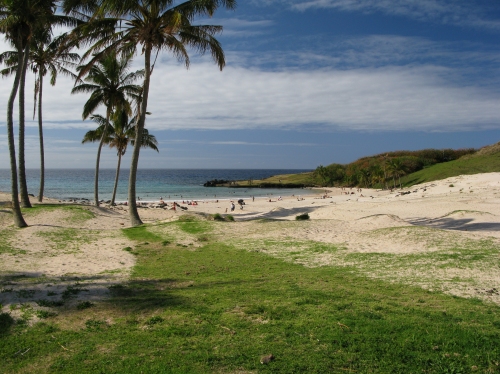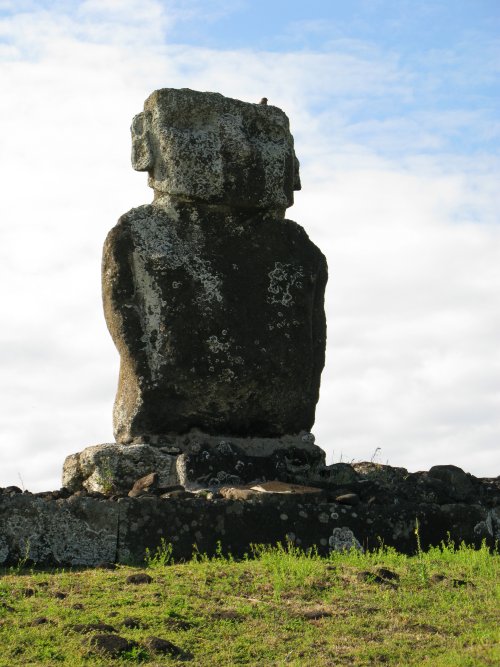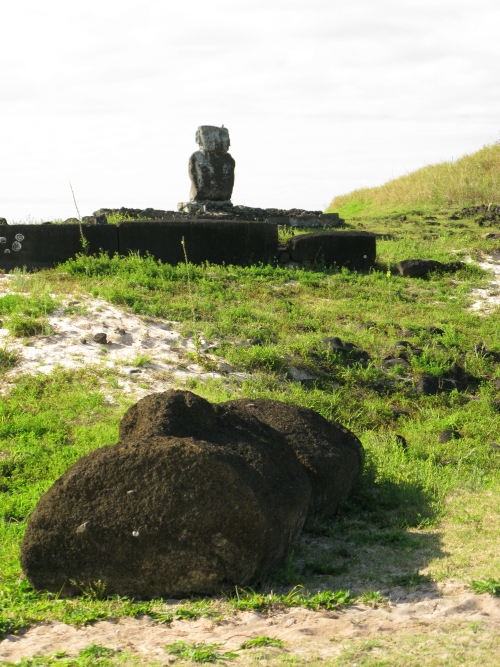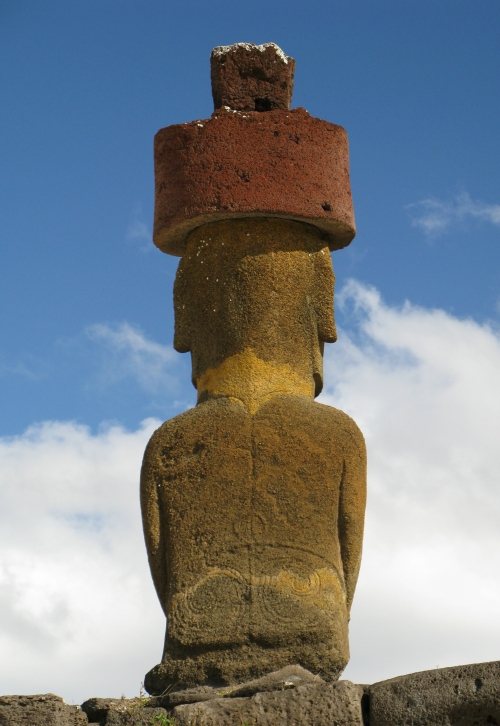Easter
Island - October 2008

According to Rapa Nui folklore, Anakena was the landing place of Hotu Matu'a, the legendary first king of the island.
Anakena is very popular with the locals as a place to picnic, swim, and generally relax. The beach area has a number of palm trees and a convenient car park!
Of course, wherever you go on Easter Island you're never far from the moai, and Anakena has some particularly interesting examples.
An old and weathered moai stands at Ahu Ature Huki near the beach at Anakena. In 1956 this moai was the first to be restored by Thor Heyerdahl and the islanders over a period of nine days to prove how the moai were originally erected.
Ahu Nau Nau is probbaly one of the most impressive restorations on the island. The moai are beautifully preserved; partly because it is believed that these were some of the last moai to be carved and because the sand provided protection from the elements after the moai had been toppled.
In 1978 a student named Sonia Haoa found fragments of worked coral and a red disk made out of scoria, the same material used to make the pukao. When fitted together they made an unmistakable eye. She brought the fragments to the Rapa Nui archaeologist Sergio Rapu Haoa who discovered they fit precisely in the eye socket of a moai. The moai at Ahu Nau Nau were restored in 1980 by Sergio .
Ahu Nau Nau has seven moai, one is missing the head and one has less than half it's body. The four largest moai are outstanding because of their pukao (topknots) made of rocky red scoria. There are other sites around the island where you will find fallen moai and pukao scattered around, but at Ahu Nau Nau the moai wear their pukao topknots proudly.
The excellent preservation is easy to appreciate when you look at the detailed carvings on the backs of the moai here. There are also petroglyphs on the ahu itself.
Anakena was also at one time a ceremonial centre where islanders read from Rongorongo boards. Rongo-rongo is the hieroglyphic script of Easter Island. For over a hundred years controversy has raged over the meaning and source of these characters. There are only 21 known tablets in existence - scattered in museums and private collections. It is thought that most of the boards were burned (as the missionaries on the island viewed them as pagan) or were hidden and lost to time.
Anakena was an important part of the Tangata manu or Birdman cult. When the new Birdman was from the western clans, he would end his celebrations at Anakena.

Anakena beach


A fallen moai with Ahu Ature Huki in the
distance

Ahu Nau Nau with well preserved late period moai
wearing pukao

An example
of the intricate carvings on the back of the moai


